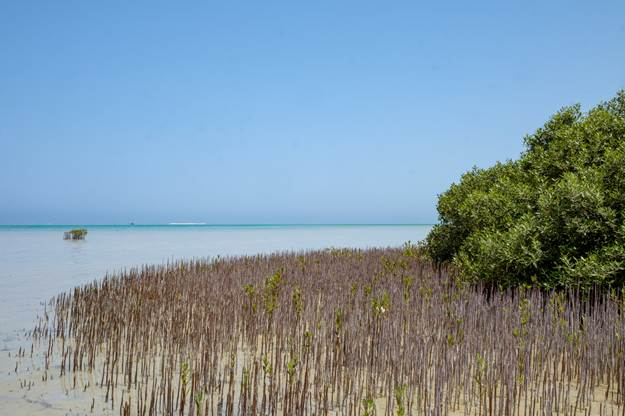New study reveals star role of seaweed in struggle against climate change

When scientist discuss blue carbon strategies, they often refer to mangroves, seagrass or saltmarsh habitats. However, macroalgae form the most extensive and productive vegetated coastal habitat, exporting over 44% of their primary carbon production File Photo
- First ever global-scale study of macroalgae contribution to global ocean carbon sequestration
- 69% of the world's macroalgae exported to the open ocean sink below 1,000 m depth, contributing to store carbon in ocean depths
- KAUST led study confirms the role played by macroalgae in carbon sequestration and the importance of including them in blue carbon assessments
In a first of its kind study, researchers from the Red Sea Research Center (RSRC) and Computational Bioscience Research Center (CBRC) at King Abdullah University Science and Technology (KAUST), provided global-scale evidence of the important role that macroalgae play in trapping carbon dioxide from the atmosphere and sequestering it in the deep sea.
KAUST scientists found a great diversity of macroalgae drifting in the global open ocean at distances ranging almost up to 5,000 km away from coastal areas 69% of this drifting macroalgae stock sinks below 1,000 m depth, leading to the sequestration of the carbon contained in their biomass in deep ocean waters.

Macroalgae are important coastal habitats. These brown macroalgae in the Red Sea shelter several fishes and other organisms. File photo.
"Our findings showed that macroalgae DNA is prevalent in the open ocean. We were able to provide quantitative evidence of macroalgae export by using metagenomes generated by global ocean expeditions Tara Oceans and Malaspina. We still have a long way to go before being able to translate DNA sequences into organic carbon amounts, but this is the first step towards documenting macroalgae DNA in the open ocean" added Ortega.
Previously considered to have a controversial role due to uncertainties about the fate of exported macroalgae, the outcome of the KAUST led study confirms the role played by macroalgae in carbon sequestration in the open ocean and the importance of including them in blue carbon assessments, which will be a key strategy to mitigate climate change.
Elaborating on the study, Carlos Duarte, co-author of the study and Professor of Marine Science at KAUST said, "We were able to efficiently analyze the massive amount of data through the DMAP metagenomics analysis platform produced by the Computational Bioscience Research Center at KAUST, supported by the University's supercomputer Shaheen, which gave us an advantage, in terms of computational capacities, relative to other research groups worldwide."
"This research was based on reports of global distribution of gene sequences in particles collected across the ocean, which were collected primarily to describe plankton biodiversity, but that we discovered to be a major resource that also contains the fingerprints of macroalgae export in the global ocean, which had been overlooked in previous analyses of these data, including the Malaspina Circumnavigation Expedition that I led".
The study marks another milestone in the ongoing research carried out by KAUST researchers in environment sustainability.

